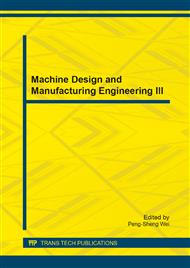p.171
p.176
p.181
p.185
p.193
p.197
p.205
p.209
p.213
Based on Particle Size of Cuttings to Study the Erosion of the Plugged Tee in Air Drilling
Abstract:
Plugged tee is the easilyworn part of an exhaust pipe during air drilling because of the flow of the compressed air with the entrained cutting particles. The effects of the particle size on the erosion of the plugged tee are studied by computational fluid dynamics (CFD). Mathematical models of the flow of the compressed air with the entrained cutting particles through the plugged tee are built and imported into the CFD through embedding procedures. After boundary conditions and the parameter of the particle size are given, the motion paths of cuttings in the different particle size in the plugged tee and its effects on erosion of the plugged tee are obtained. Erosions in the plugged tee are mainly distributed in the wall of the buffer segment and the joints and mainly caused by the scope of the particle size of cuttings. The motion paths and the residence time of cuttings with different particle size are different, so the erosions of the joints and the buffer segment are different.
Info:
Periodical:
Pages:
193-196
Citation:
Online since:
July 2014
Authors:
Keywords:
Price:
Сopyright:
© 2014 Trans Tech Publications Ltd. All Rights Reserved
Share:
Citation:


